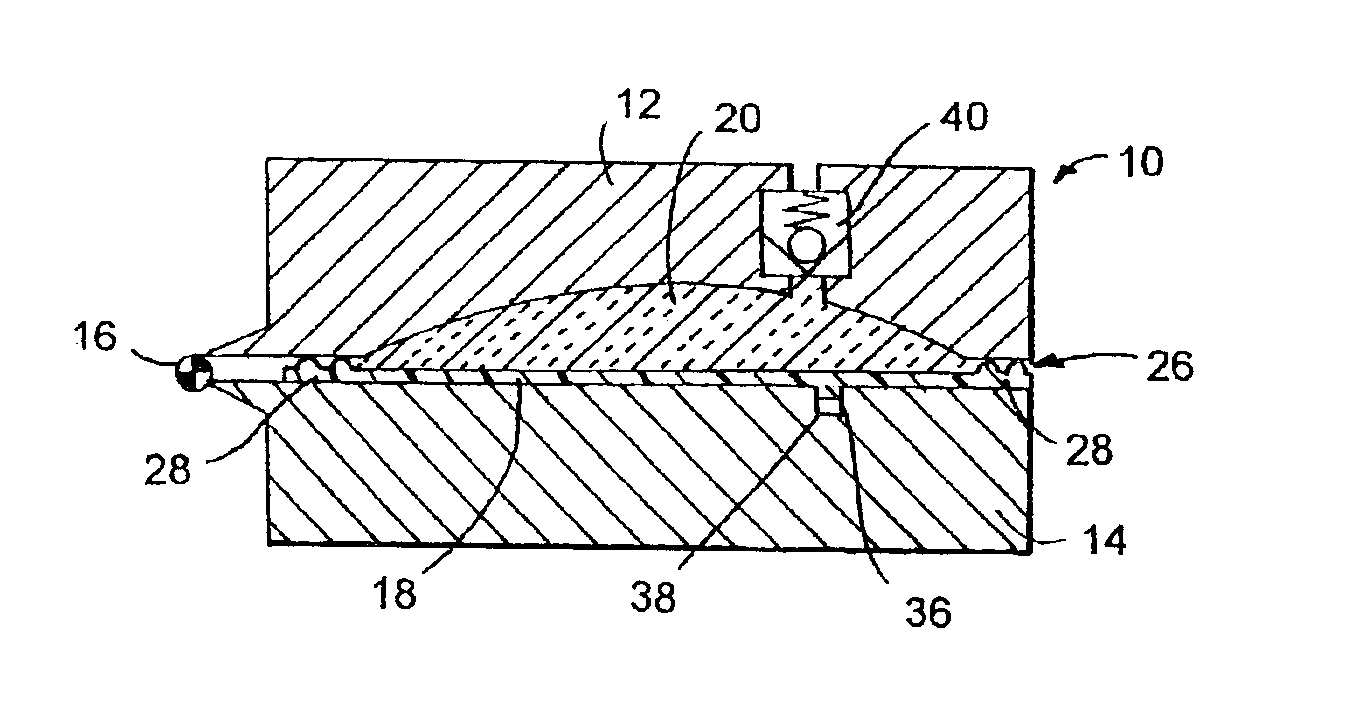Process for molding on a substrate
a technology of injection molding and substrate, which is applied in the direction of ceramic shaping apparatus, other domestic objects, manufacturing tools, etc., can solve the problems of small gaps between the mating faces, degree of mismatch between the faces, and inability to produce foam rim parts
- Summary
- Abstract
- Description
- Claims
- Application Information
AI Technical Summary
Benefits of technology
Problems solved by technology
Method used
Image
Examples
Embodiment Construction
[0016]In FIG. 1, there is shown a cross-sectional view of a mold 10 comprising a mold segment 12, and a mold segment 14. Mold segments 12 and 14 are hinged together with a precision open / close mechanism 16. When the mold 10 is closed, as shown in FIG. 1, mold segment 12 and mold segment 14 together define a mold cavity in which an injection molded thermoplastic substrate 18 is disposed, and in which a mixture of liquid reactants is injected and reacted to form a molded component 20 which conforms with the remaining shape of the mold cavity that is not occupied by substrate 18. Mold segments 12 and 14 have complementary shaped faces 22 and 24 that mate with each other at a parting line 26.
[0017]Substrate 18 has a contoured surface which conforms with mold cavity defining surfaces of mold segment 12. In the illustrated embodiment, substrate 18 is a substantially flat panel or sheet, and mold segment 12 has a substantially flat surface conforming with the shape of substrate 18. Substra...
PUM
| Property | Measurement | Unit |
|---|---|---|
| Moldable | aaaaa | aaaaa |
| Thermoplasticity | aaaaa | aaaaa |
Abstract
Description
Claims
Application Information
 Login to View More
Login to View More - R&D
- Intellectual Property
- Life Sciences
- Materials
- Tech Scout
- Unparalleled Data Quality
- Higher Quality Content
- 60% Fewer Hallucinations
Browse by: Latest US Patents, China's latest patents, Technical Efficacy Thesaurus, Application Domain, Technology Topic, Popular Technical Reports.
© 2025 PatSnap. All rights reserved.Legal|Privacy policy|Modern Slavery Act Transparency Statement|Sitemap|About US| Contact US: help@patsnap.com


